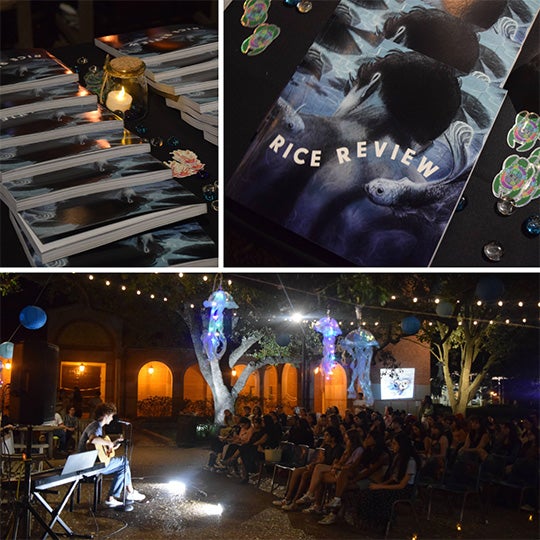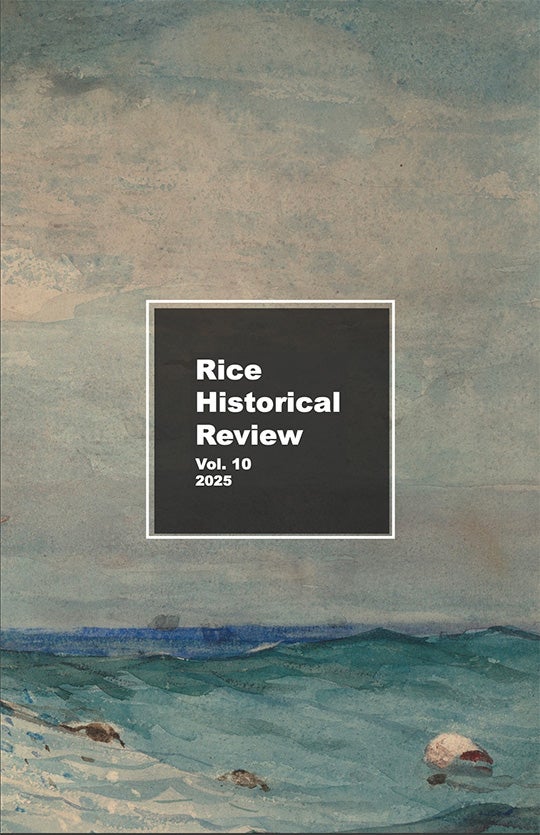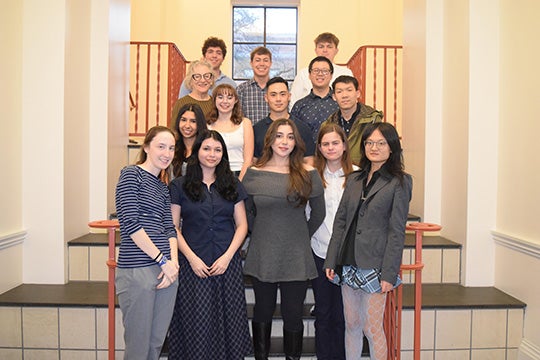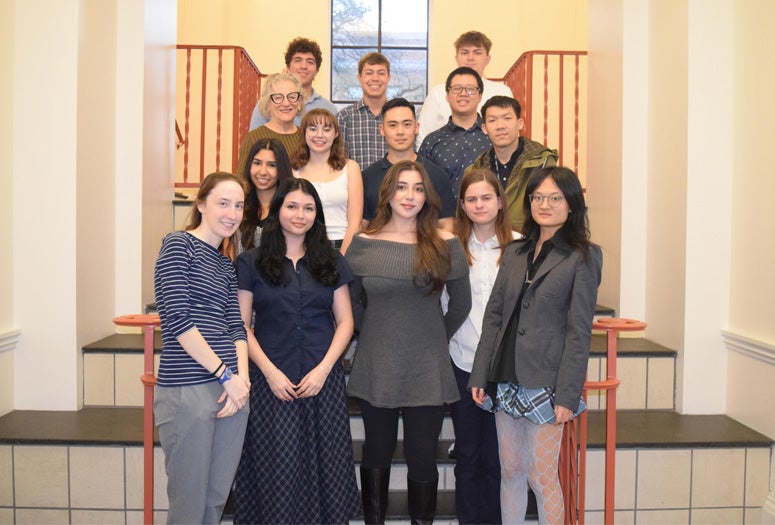In Rice University’s School of Humanities, students aren’t just studying the liberal arts; they’re actively shaping them. From celebrating campus creativity to elevating academic research, two student-led publications are giving undergraduates a platform to lead, edit and publish meaningful work.
This spring, R2: The Rice Review, the university’s undergraduate literary journal, was named runner-up for the Association of Writers and Writing Programs’ national award for Best Undergraduate Literary Journal — the second time R2 has received national recognition from AWP.
Founded in 2004 by novelist and writer-in-residence Justin Cronin, R2 publishes the best poetry, prose and art created by Rice undergraduates. The magazine also features interviews with prominent authors and supports a thriving campus literary scene through open mic nights, off-campus events and a community-first editorial process that empowers students across disciplines.
“The students’ job is to select the best pieces of literature and art produced by the Rice undergraduate student body and to serve as a hub for free and artistic expression on our campus,” said faculty adviser Ian Schimmel, associate teaching professor of English.

Schimmel, who has advised R2 for more than a decade, calls the journal both a literary platform and a creative laboratory.
“Creating this magazine for both print and digital formats allows our students to engage with real-world editorial issues in a hands-on setting,” Schimmel said.
Outgoing Editor-in-Chief Katherine Jeng described her journey with the journal as transformative.
“The biggest takeaway for me has always been the amount of talent on this campus,” Jeng said. “Getting to know everyone on that really personal level has allowed me to feel a connection to this campus and this literary community.”
Jeng also noted how the experience sharpened both practical and creative skills — from learning layout software and managing spreadsheets to defining good writing through open conversation with peers.
“It allowed me the freedom to decide what I thought good poetry or good prose looks like,” Jeng said.
Incoming Editor-in-Chief Rachel Parr, a double major in math and English, said she’s most excited to focus on the big-picture elements of production and to build on the welcoming, experimental community that first drew her in.
“This is such a community that made me feel like I was at home at Rice,” Parr said. “And I want to further that community for other people.”
Parr, who has worked in the creative nonfiction section of the magazine, said reading the work of fellow students has pushed her to think more expansively about genre and form.
“By receiving student submissions that push these boundaries, I’ve been encouraged to push boundaries in my own writing,” Parr said.

While the finished magazine earns accolades, the process behind it is a deeply collaborative one. Each week, staffers meet to discuss submissions, debate editorial decisions and develop their critical voices.
“Our conversations teach us how to have critical engagements in public and with our peers and how to offer pushback and counterpoint with the kind of nuance that an editorial environment requires,” Schimmel said.
The Rice Historical Review offers a different but equally impactful outlet for student voices. Founded in response to a national trend toward undergraduate research publishing, the journal highlights exceptional student scholarship in history through its annual publication, digital short pieces, interviews and a student-produced podcast called “Cast from the Past.”
Faculty adviser Tani Barlow, the George and Nancy Rupp Professor of Humanities and a longtime editor herself, said the lessons students gain from working on the journal “vastly outstrip the actual product.”
“They begin to understand that publication is a business,” Barlow said. “It takes a lot of skill, and to get good at these skills, you have to practice.”
Students can start with a variety of editorial board roles such as podcasting or copy editing and gradually take on more responsibility. Co-Editor-in-Chief Annie McKenzie, a senior double-majoring in history and Latin American and Latinx studies, began on the podcasting team before stepping into a leadership role.
“Running the journal was a lot,” McKenzie said. “But it gave me confidence that I could go into meetings and direct them, work with different groups, even with the printer.”
McKenzie said her experience felt like a bridge between generations.
“Both of my parents are writers,” McKenzie said. “They are opinion writers, so while the style of writing is different, editing the journal gave me a neat insight into the editing work they do. I felt like I was living up to my bloodline, which is cool.”
She also spoke of the breadth and richness of student work across the humanities.

“There’s such a wide variety of research students are able to do,” McKenzie said. “Reading the journal, the humanity part of the humanities really comes out — especially through discovering voices that have been marginalized or perspectives that aren’t always included in the historical narrative.”
Barlow emphasized that the value of the Rice Historical Review extends beyond the students whose work is selected. Everyone who submits receives feedback, and the process of reading, ranking and discussing submissions teaches students how to evaluate and improve academic writing.
“It’s not just about winning and losing,” Barlow said. “The students cultivate a very grounded, discussion-oriented process.”
Both publications are rooted in collaboration, rigor and a belief in the power of student voices. From poems and essays to peer-reviewed historical research, the works published each year offer a glimpse into the creative and intellectual force of Rice undergraduates.
“You don’t need to buy a book at a store to discover great new writers and writing,” Schimmel said. “You can find brilliance and extraordinary talent right here in the Rice community.”

